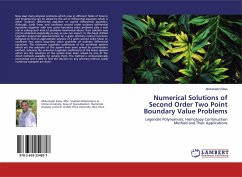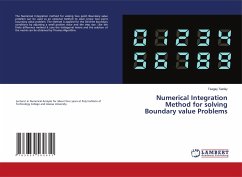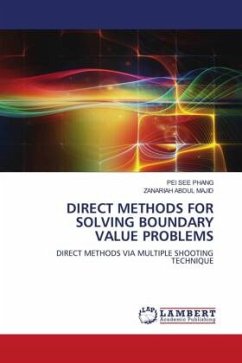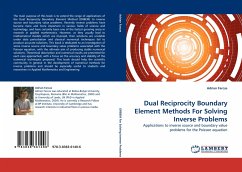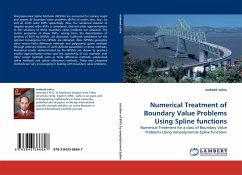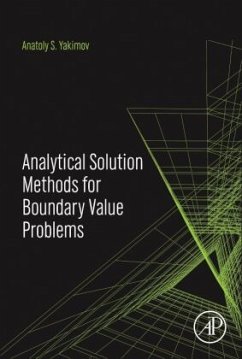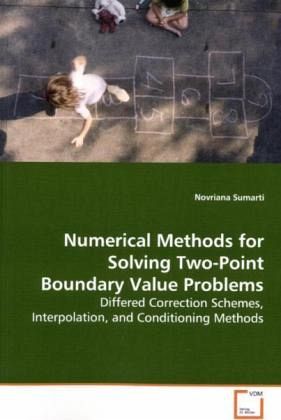
Numerical Methods for Solving Two-Point Boundary Value Problems
Differed Correction Schemes, Interpolation, and Conditioning Methods
Versandkostenfrei!
Versandfertig in 6-10 Tagen
52,99 €
inkl. MwSt.

PAYBACK Punkte
26 °P sammeln!
The numerical approximation of solutions of ordinarydifferential equations played an important role inNumerical Analysis and still continues to be anactive field of research. In this book we are mainlyconcerned with the numerical solution of thefirst-order system of nonlinear two-point boundaryvalue problems. We will focus on the problem ofsolving singular perturbation problems since this hasfor many years been a source of difficulty to appliedmathematicians, engineers and numerical analystsalike. Firstly, we consider deferred correctionschemes based on Mono-Implicit Runge-Kutta (MIRK) andLoba...
The numerical approximation of solutions of ordinary
differential equations played an important role in
Numerical Analysis and still continues to be an
active field of research. In this book we are mainly
concerned with the numerical solution of the
first-order system of nonlinear two-point boundary
value problems. We will focus on the problem of
solving singular perturbation problems since this has
for many years been a source of difficulty to applied
mathematicians, engineers and numerical analysts
alike. Firstly, we consider deferred correction
schemes based on Mono-Implicit Runge-Kutta (MIRK) and
Lobatto formulae. As is to be expected, the scheme
based on Lobatto formulae, which are implicit, is
more stable than the scheme based on MIRK formulae
which are explicit. Secondly, we construct high order
interpolants to provide the continuous extension of
the discrete solution. It will consider the
construction of both explicit and implicit
interpolants. The estimation of conditioning numbers
is also discussed and used to develop mesh selection
algorithms which will be appropriate for solving
stiff linear and nonlinear boundary value problems.
differential equations played an important role in
Numerical Analysis and still continues to be an
active field of research. In this book we are mainly
concerned with the numerical solution of the
first-order system of nonlinear two-point boundary
value problems. We will focus on the problem of
solving singular perturbation problems since this has
for many years been a source of difficulty to applied
mathematicians, engineers and numerical analysts
alike. Firstly, we consider deferred correction
schemes based on Mono-Implicit Runge-Kutta (MIRK) and
Lobatto formulae. As is to be expected, the scheme
based on Lobatto formulae, which are implicit, is
more stable than the scheme based on MIRK formulae
which are explicit. Secondly, we construct high order
interpolants to provide the continuous extension of
the discrete solution. It will consider the
construction of both explicit and implicit
interpolants. The estimation of conditioning numbers
is also discussed and used to develop mesh selection
algorithms which will be appropriate for solving
stiff linear and nonlinear boundary value problems.



